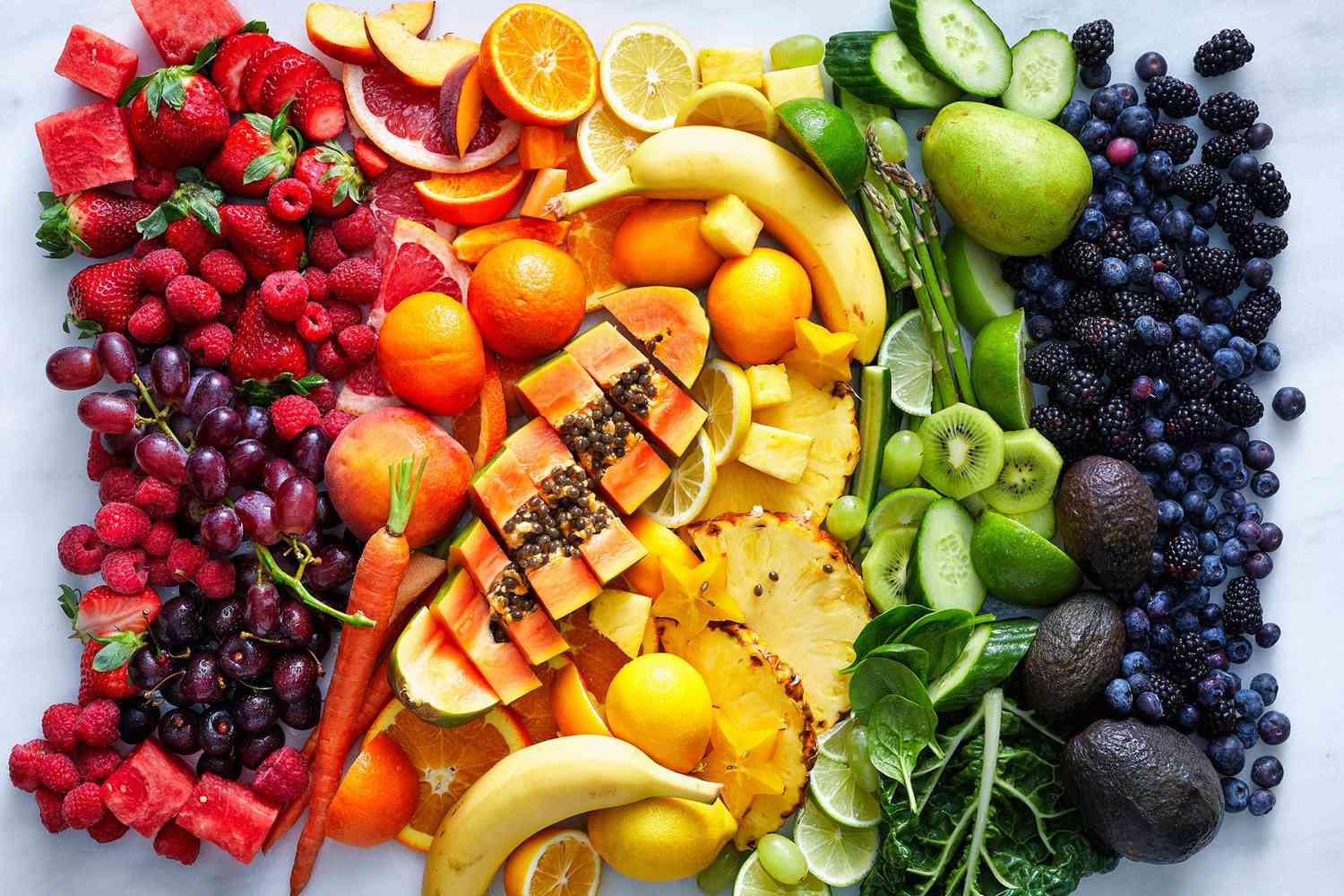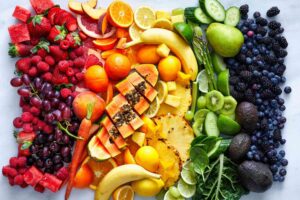As we go into some other fruits that are not actually fruits, we will explore the interesting realm of botanical misnomers. Beyond what is typically seen of as fruits, there is a class of edible treats that cannot be described by a botanical. These ostensibly fruity imposters give the commonplace a twist while challenging our preconceptions. The world of foodstuffs presents a delicious confusion, from avocados posing as fruit to tomatoes posing as veggies.
It takes a trip through botanical science and culinary arts to appreciate the subtle differences between these culinary aberrations and actual botanical fruits. Come along on this journey as we explore the astonishing diversity that can be found within the field of gastronomy and solve the mysteries surrounding some other fruits that are not actually fruits! As we sift through the layers of botanical knowledge and redefine what it means to be a fruit, embrace the unexpected.
Quick Navigation
Exploring Some Other Fruits That Are Not Actually Fruits: Exposing Culinary Mysteries
Take a culinary adventure with us as we explore the mysteries of some other fruits that aren’t really fruits. Outside the comfortable boundaries of conventional botanical classifications, some culinary delights cast doubt on our understanding of what exactly qualifies as a fruit. We’ll explore the intriguing realm of edibles with incorrect labels in this investigation, looking at the subtle differences that make it difficult to distinguish between real fruits and fakes.
Challenging Botanical Conventions: An In-Depth Exam of Culinary Fruits
In botany, a fruit is defined as an organ that develops from the fertilized ovary of a flower and contains seeds. Strict botanical categories frequently yield to practical concerns when it comes to culinary use. One fruit that is frequently confused for a vegetable is the tomato. There are additional fruits that are not truly fruits. Although tomatoes have qualities similar to those of vegetables in the kitchen, they really meet the botanical requirements to be considered fruits, defying popular belief.
The Mask of the Vegetable
1. Bell Peppers: An Intriguing Culinary Puzzle
Bright and adaptable in the kitchen, bell peppers are often thought of as vegetables. However, taking into account that they carry seeds, it becomes clear that they are fruits according to botany. This contradiction highlights the differences in categorization between culinary and botanical.
2. Cucumbers and Zucchini: Botanical Fruits Undercover
Cucumbers and zucchini, which are common ingredients in savory recipes, are frequently cooked like vegetables. Both are classified as fruits botanically since they contain seeds inside. This mislabeling emphasizes how our image of fruits and vegetables is influenced by their culinary utility.
Read Also: University of Kuala Lumpur | Scholarships, Courses Tuition & Ranking
Botanical vs. Culinary: Bridging the Divide
One intriguing feature of several other fruits that aren’t really fruits is how their culinary applications and botanical classifications differ from one another. Culinary definitions emphasize flavor, texture, and application, whereas botanical definitions depend on scientific standards.
1. Avocado: A Rich Culinary Strangeness
Known for their rich flavor and creamy texture, avocados defy the conventions of botany by being categorized as berries. Their adaptability in the kitchen frequently situates them in the vegetable camp, illustrating the complex interaction between culinary pragmatism and botanical science.
2. Eggplants: A Botanical Mystery or Berries in the Kitchen
In terms of botany, eggplants are classified as berries, which is different from the typical culinary classification of vegetables. The disparity between these viewpoints highlights the necessity of having a comprehensive knowledge of the plants we eat.
Crossing Cultural Divides: How Culture Affects How We See Food
Our perspective of fruits and vegetables is greatly influenced by cultural perceptions. Culinary customs and cultural traditions have given new meaning to several fruits that aren’t really fruits.
1. Plantains: An Epicurean Multipurpose Story
Because they are starchy, plantains are sometimes confused for vegetables when, in fact, they are actually fruits. Plantains are viewed as adaptable cooking items in many cultures, which demonstrates how our understanding of botanical classifications can be influenced by culinary traditions.
2. Coconuts: Botanical Legends in Gastronomic Guidance
Botanical drupes, coconuts are well-known for their varied culinary applications. Nonetheless, they are frequently positioned like nuts in culinary applications. The dynamic link between botanical science and culinary heritage is best illustrated by this cultural reinterpretation.
Breaking Through Paradigms: Mislabeling and Its Consequences
Not only does the mislabeling of some fruits cast doubt on our comprehension of plant biology, but it also calls into question long-standing culinary customs. Some fruits that aren’t really fruits make us reevaluate the strict limitations on botanical categorization.
1. Sweet Potatoes: The Cause of Chef Ignorance
Commonly considered a vegetable, sweet potatoes are actually plant roots. This mismatch calls into question our assumptions and promotes a more thorough investigation of the complex connections between plant morphology and culinary use.
2. Rhubarb: Botanical Roots and Culinary Stalks
Botanically derived, rhubarb is a culinary vegetable that is frequently used in sweets. This is a prime example of how fruit labeling fraud broadens our appreciation of the intricacy of the natural world while also challenging our knowledge of plant biology and culinary customs.
A Tapestry of Diverse Cuisines
The nexus of culinary traditions and botanical science produces a rich tapestry of diversity in the world of some other fruits that aren’t really fruits. Understanding the subtleties of mislabeling forces us to reevaluate our assumptions and fosters a greater understanding of the dynamic interactions between the science that determines what we consume and what it actually is. Let’s embrace the intricacy found in every bite and rejoice in the pleasant bewilderment that adds spice to our culinary experiences as we taste the flavors of these impersonators of cuisine.
Read Also: 10 Best Automotive Engineering Colleges in the World | Ranking
What distinguishes a botanical fruit from these fake fruits?
According to scientific classification, seeds are found in botanical fruits, which grow from a flower’s fertilized ovary. Some other fruits that are not actually fruits exist as a result of this definition’s sharp contrast with the gastronomic idea of fruit. In contrast to actual fruits, impostors frequently originate from non-ovarian tissues, defying accepted botanical theories. For example, tomatoes—which are sometimes mistaken for vegetables—have seeds inside of them, which is why they are classified as a botanical fruit. In the finer points of plant structure, where a rigorous devotion to scientific criteria exposes surprise impostors among our ordinary consumables, botanical and culinary definitions diverge.
Exist any widespread myths regarding some veggies being considered fruits and vice versa?
Indeed. Rather than being true to their biological names, fruits and vegetables are frequently confused due to culinary customs. Other fruits that are not actually fruits, such as bell peppers, cucumbers, and zucchini, are botanical fruits rather than fruits. This mismatch results from the practical viewpoint of the kitchen, where a food’s classification is often determined by its sweetness or savory flavor. The misunderstandings around the actual nature of these plant-based goods are sustained by the way they have permeated popular culture. Recognizing the minor variations makes us reevaluate the gastronomic vocabulary that has been ingrained in us for years and challenges our preconceptions.
In what ways do definitions and applications in cooking differ from taxonomy in plants?
Flavor and application are frequently given precedence over exact adherence to botanical classifications in culinary definitions and uses. Avocados and eggplants, for example, are examples of fruits that are not actually fruits. Although avocados and eggplants are considered vegetables in the kitchen, they are actually berries according to botany. This contrast between culinary and botanical stems from the pragmatism of cooking, where classifications are based on flavor profiles and preparation methods. The ensuing mismatch challenges us to recognize the subtleties in both the scientific and culinary domains, adding to the rich tapestry of culinary diversity.
Could you give some examples of popular fruits that don’t meet the standard botanical requirements?
Of course. Some other fruits that are not actually fruits in the botanical sense are bananas and pineapples, which are fascinating examples. In terms of botany, bananas are categorized as berries, whereas pineapples are regarded as composite fruits that result from the blending of several different blossoms. These unusual botanical labels deviate greatly from what we know about cooking. Thoughts of bananas as fruits are prevalent, and the peculiar makeup of pineapples makes them much more confusing. These illustrations draw attention to the fascinating intricacy of botanical classifications and stress the need of navigating the hazy boundaries between accepted scientific definitions and culinary practices.
How much does cultural perception factor into the classification of some items as fruits or vegetables?
Our impression of fruits and vegetables is greatly influenced by our cultural background. Cultural traditions and culinary practices commonly classify some fruits that are not actually fruits as vegetables. For example, although though plantains are technically considered fruits, they are regarded as vegetables in various culinary traditions. Not rigorous adherence to botanical criteria, but the practicality of cooking is the source of this cultural influence. Examining these cultural subtleties enhances our understanding of various culinary traditions and shows how social viewpoints influence how dynamically we classify food.
Recommended:
- Doha Institute for Graduate Studies – Tuition, Ranking, Scholarships & Courses
- How Do Butterflies Lay Eggs?
- Top 15 Best Universities in Europe for Business
- List Of 15 Full Ride Scholarships For Adults
In what ways do these incorrectly labeled fruits contradict our knowledge of plant biology and culinary customs?
Fruit mislabeling forces us to reevaluate established classifications, which in turn challenges our knowledge of plant biology. Sweet potatoes and rhubarb, two other fruits that are not actually fruits, deviate from the norm by being used as culinary vegetables with distinct botanical roots. This calls into question the strict limitations we impose on plants and their reproductive systems. It also forces us to reconsider culinary customs and to acknowledge the cultural and historical backgrounds that have influenced our understanding of what defines a fruit or vegetable. By bridging the gaps between the fields of plant biology and culinary traditions, the investigation of these mislabeled fruits contributes to a greater understanding of the complex interrelationships between science and culture.
SEE ALSO:
Trust you found our article on What Are Some Other Fruits That Are Not Actually Fruits helpful. Follow our website for more interesting articles.


